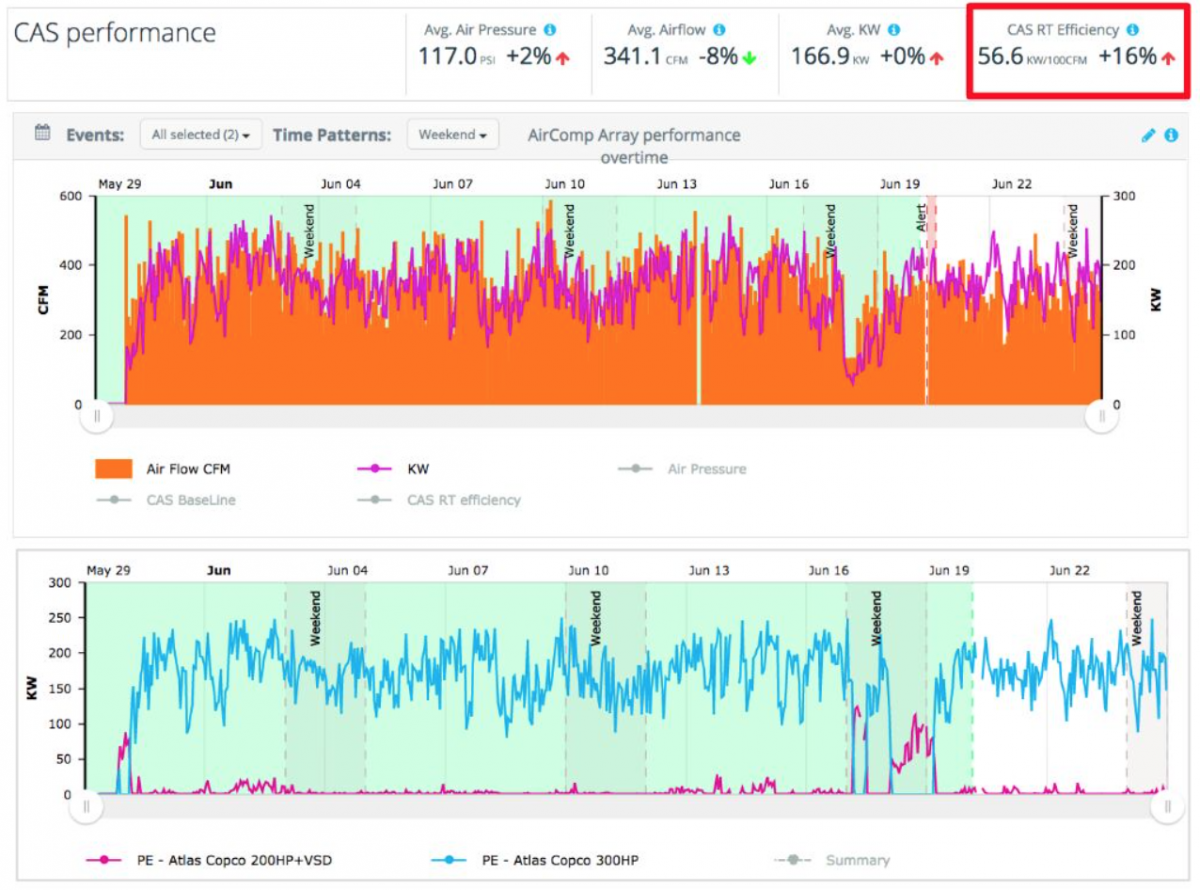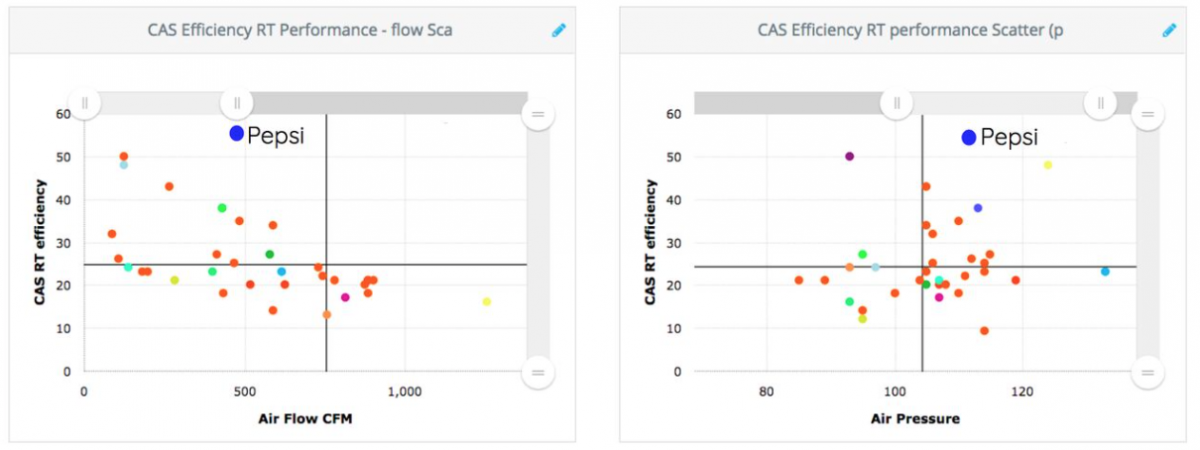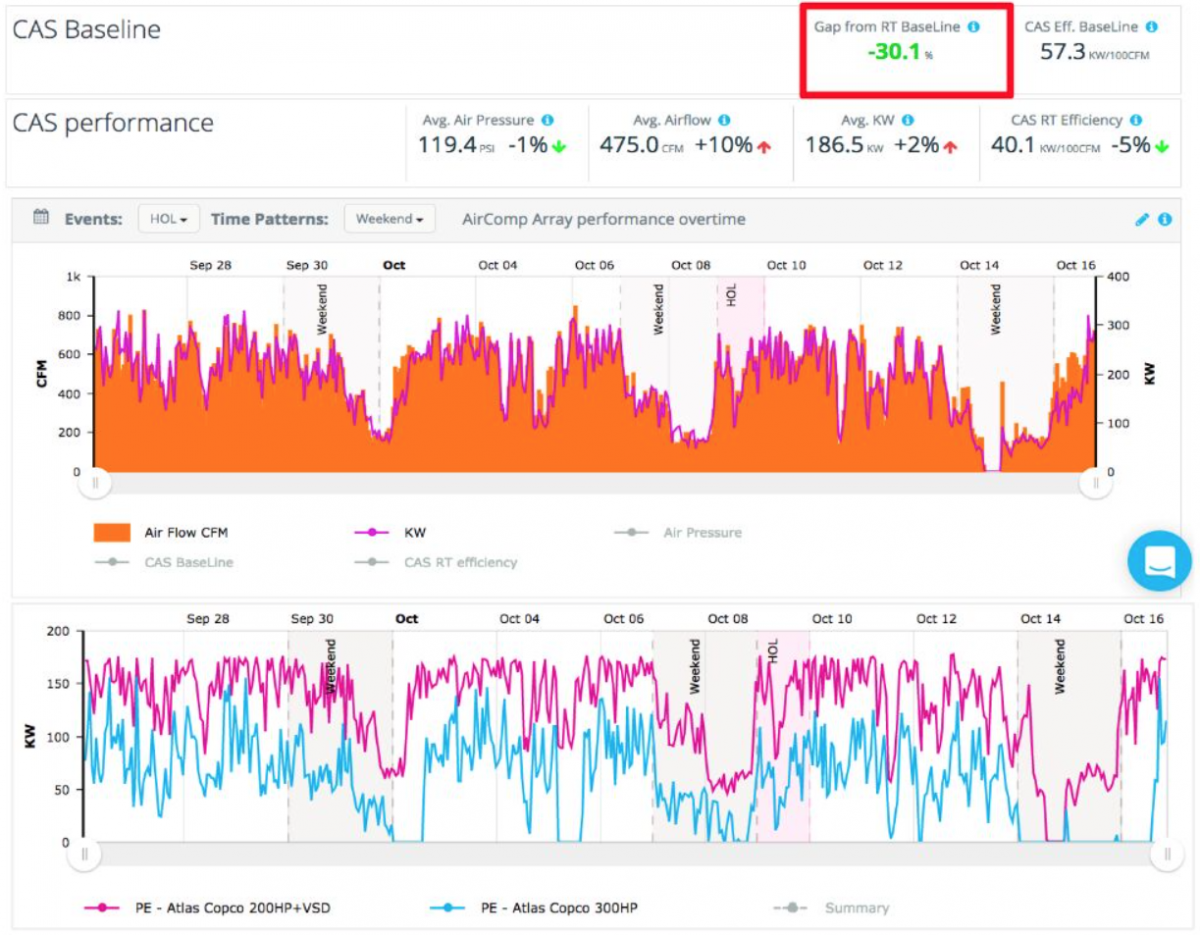As energy costs continue to rise it becomes increasingly important for industrial operations to reduce waste and inefficiencies wherever possible. It’s why an innovative company known as Lightapp has developed an intelligent resource management software platform to help manufacturers and other industrial users reduce energy consumption and save costs in the process.
According to Lightapp, energy consumption is often among the highest items in many manufacturing plant’s operational budgets, sometimes second only to raw materials. Energy costs are driven in large part by a variety of systems such as air compressors, chillers, production lines, boilers, and dryers.
When it comes to saving energy, it’s a virtual “battlefield” reports Lightapp. This article discusses how Lightapp’s cloud-based software solution helps companies across the world monitor compressed air systems and win the energy-savings battle.
Background
Founded in 2009 by CEO Elhay Farkash and COO Guy Peer, Lightapp (www.lightapp.com) is a privately held company based in Israel. The company also has an office in Menlo, Calif. The company’s analytics software solution – also called Lightapp – is specifically designed to collect energy data and give decision-makers at industrial plants the information they need to reduce energy consumption.
The software solution, in combination with in-plant data collection hardware, gathers data from new and existing industrial sensors, as well as information from manufacturing information systems. It also collects external data like weather related information. It then generates reports to help users understand how and where energy is consumed.
Since its inception, more than 150 manufacturers in Israel and the United States have used Lightapp to achieve significant energy savings. As an example, Israeli dairy producer Tnuva used the software to realize a 36% reduction in total plant energy reduction.
Others in the United States have also experienced success with Lightapp, thanks in part to funding from the Israel-US Binational Industrial Research and Development (BIRD) Foundation in 2014. BIRD promotes mutually beneficial collaboration between Israeli and American companies in various technological fields.
BIRD funding played in instrumental role in the development of a resource optimization system for paper manufacturer Pratt Industries, Conyers, Ga., which also owns the distinction of being one of the first U.S. Lightapp installations.
Pratt Process Engineer Bob Pelchat helped develop and implement the system, which monitors hundreds of sensors on the company’s paper machines.
“I like the system because it lets me get a quick look at key performance indicators in real time,” said Pelchat, “We monitor many of our utilities in order to measure energy, steam, water, gas, compressed air and other items. The system is set up to report how much of each utility is used per ton of paper in keeping with our target to reduce each input.”
The solution has helped Pratt achieve significant energy savings, but Pelchat said the major benefit is reduced downtime. As an example, he said Lightapp monitors 200 or so motors at various locations within the plant. The readings from the motors show loading conditions and other important parameters. The readings, and various warnings pre-programmed into the software, allow Pratt to preemptively replace questionable motors during downtime based on their reported condition – and as a result – avoid process outages due to random failures. This saves a huge amount of money by increasing process reliability. “The energy efficiency is nice,” said Pelchat, “but it is not our biggest priority.”

Figure 1: Electronic Monitoring gathers various sensor data and sends it to a cloud database for processing and visualization.
Compressed Air Monitoring
Based on a \$5 million grant from the California Energy Commission (CEC) operations throughout California will also soon experience the advantages of Lightapp, pending the results of a successful trial project involving 100 industrial facilities. CEC awarded the grant to Lightapp and the E2e project, which is a joint initiative of the University of California, Berkeley, Massachusetts Institute of Technology, and University of Chicago.
The grant, awarded based on the Lightapp and E2e’s previous successes, will be used to conduct what CEC describes as the largest evaluation of an innovative energy monitoring system for industrial facilities. The grant is also part of CEC’s Electric Program Investment Charge (EPIC) program, an ambitious effort to develop and demonstrate the next generation of energy technologies to address California’s clean energy goals.
As reported by CEC: “The project will provide industrial customers and policymakers data-based evidence on whether advanced energy monitoring is a cost-effective approach to save energy and reduce greenhouse gas emissions.”
For this project, E2e and Lightapp will test Lightapp’s energy-monitoring system on the 100 facilities’ compressed air systems. Air compressors and the equipment they drive account for around 10 percent of the electricity used by manufacturers. In some plants, compressors use more electricity than any other equipment. With a leaky compressor valves, money is literally disappearing into thin air.
If successful, the technology can be used throughout a facility to measure energy consumption in every part of the manufacturing process. E2e will structure the evaluation component of the program as a randomized controlled trial, where randomly chosen facilities will be recruited to participate and receive Lightapp’s analytical software.
This arrangement will enable the faculty researchers – Catherine Wolfram (Berkeley-Haas), Michael Greenstone (University of Chicago), and Christopher Knittel (MIT) – to precisely measure the impact of the new technology and analytics on industrial facilities’ electricity consumption.
By including a sampling of facilities from different industrial sectors, the researchers also hope to identify which types of facilities are more likely to adopt the new technology and gather information regarding potential barriers to adoption. The project aims to generate rigorous and reliable evidence on the effectiveness of an industrial energy-management system. The findings can be used to encourage thousands of California manufacturers – and more worldwide – to deploy energy management systems to save energy, lower costs, and reduce carbon emissions.
Eye-Popping Results Early On
The project has shown eye-popping energy savings and/or efficiency improvements early on at a number of operations. In keeping with the old saying, “You can’t manage what you don’t measure,” project participants with the support of Lightapp staff have discovered significant inefficiencies. In addition, many have often corrected the issues with very low-cost solutions. Others have been able to defer the purchase of new compressed-air production equipment based on the data obtained.
Packaging Company
A packaging company engaged in the project reports how it was able to avoid the need to invest in new equipment and piping to address a plant pressure problem.
“The Lightapp information was very useful in helping troubleshoot our plant pressure problems,” said Dragan Militiev, the plant Process Engineer at the time of implementation. “It showed our issues were not compressor-capacity related, but due to a high level of leaks and an undersized air dryer.”
According to Militiev, continuous monitoring and the availability of data showed what exactly the pressure was doing in the plant under various conditions, and narrowed the pressure problem to a lower -cost solution. The plant had originally planned to add two new compressors and upgrade a long length of supply piping at a cost of \$120,000. However, new information showed that repairing leaks and replacing the dryer, at much lower cost, would fix the problem, saving unnecessary equipment purchases.
Pepsi Fresno
Pepsico in Fresno, Calif., is another example of a company that had a Lightapp system installed on its compressed air system as part of the study.
The system monitors both high-pressure PET system and the 100 psi plant system. Before the installation the plant did not track energy or flow related information on the systems. Two large air compressors are used on the main plant low-pressure system. These include a 200 hp VSD compressor and a larger 300 hp fixed-speed unit.
From the start, monitoring showed that the system was not performing very well, with system specific power, a measure of the energy input (kW) compared to 100 cfm output (called the specific power), running near 57 kW per 100 cfm (Figure 2), which is considered very poor.

Figure 2: The baseline system efficiency for Pepsico Fresno, before monitoring, was an unacceptable 57 kW/100 cfm (Source Lightapp). Click here to enlarge.
In looking at the data, Lightapp and Pepsico discovered the VSD compressor, the most efficient unit to run for partial loads, was running only about 2% of the time, with the larger base compressor inefficiently supplying the varying load.

Figure 3: Scatter plots showed Pepsico Fresno was an outlier for both system efficiency and air pressure compared to similar systems (Source Lightapp). Click here to enlarge.
A very useful feature of the Lightapp solution is the ability to compare monitored facilities against each other. The data (Figure 3) clearly showed that Pepsico Fresno was an outlier in terms of system efficiency and plant pressure. Typical system efficiency in the group averaged 22 kW per 100 cfm. The data also showed a high level of system leakage during non-production times.
“Based on the data we ended up changing the compressor settings, at no cost, and got the compressors to work in a more efficient way,” said Ben Duncan, Pepsico Fresno Production Manager. “Technicians from Lightapp came to the plant to help us and the monitoring system showed the results of our efforts.”
As shown (Figure 4), the improvement after the adjustment resulted in a better specific power of 40 kW per 100 cfm, lower than previous, but still in the high range. The software is reporting a 30% increase in efficiency over the base case. Future plans are to better address compressor control, lower system pressure and reduce compressed air leakage. In addition, the company is considering vibration analysis and monitoring of their chiller systems using the same software. Duncan was so impressed with the system he has recommended it to the company’s Sacramento and Buena Park plants.

Figure 4: The system specific power has been improved with some simple control system adjustments (Source Lightapp). Click here to enlarge.
Baked Goods Plant
At the Bimbo Bakeries plant in Montebello, Calif., the study showed how the Lightapp solution led to more energy-efficient and effective use of compressed air and more.
Plant Engineer Matthew Davis reports Lightapp was installed in April 2017 and it took a few months for the study to capture the necessary baseline information, before being turned over to the plant. Parameters measured on the 2 x 200 hp and 2 x 100 hp system are compressed air flow, pressure, compressor power and energy consumption.
The system was initially measured at a specific power of about 40 kW per 100 cfm, but is now running at a level of 28 kW per 100 due to a few adjustments made to the compressor order of priority and some load reductions. Davis said the initial analysis of the data showed two large 200 hp compressors always running in their plant, but with each fighting for control. When one was loaded the other would unload. Based on this, adjustments were made and one of the large compressors was shut down with a smaller 100 hp taking its place. Plans are to install a compressor control system to improve system efficiency.
“The information from Lightapp showed that we were using more energy than we should, and the flow profile showed we were having large spikes in our air flow at certain times of the day,” said Davis. “We found that during shift changes our operators were all using compressed air blowing at the same time to clean our bread pans. This caused our compressor operators to start another compressor, and leave it running, ruining our system efficiency.”
Subsequently, the plant rescheduled the blowing so that it could be done over a longer period of time, lowing the peak. Low-pressure blowers are being installed to remove the need for any 100 psi compressed air to be used at all, with the expected reduction to be 800 cfm, about 200 hp worth of air compressor capacity.
The monitoring system also showed problems with the flour bin dust collectors, which have diaphragm operated blasters that reverse pulse using compressed air to clear dust from bag filter elements. Due to the hot environment in California, the rubber diaphragm material degrades at an accelerated rate over time, causing valve failure that can consume large amounts of compressed air. Future plans are to place flow meters on the main feed to these devices and set up system alarms to signal if failure occurs.
Conclusion
As many companies have found over the years, simply monitoring and analyzing the data from compressed air systems can reveal all sorts of hidden challenges, many of which can be improved by low-cost/no-cost measures. These profiled plants are prime examples of the varied problems and solutions that can improve the efficiency of compressed air systems, and other systems in industrial plants, all as a result of a focus on collecting and analyzing system data. The Lightapp software appears to be one of the best at gathering this data and presenting it in a form that is easy for system operators to understand and use to track system KPI’s and make any necessary improvements.
For more information contact Ron Marshall, Marshall Compressed Air Consulting, tel: 204-806-2085, email: ronm@mts.net
To read more System Assessment articles please visit www.airbestpractices.com/system-assessments.




